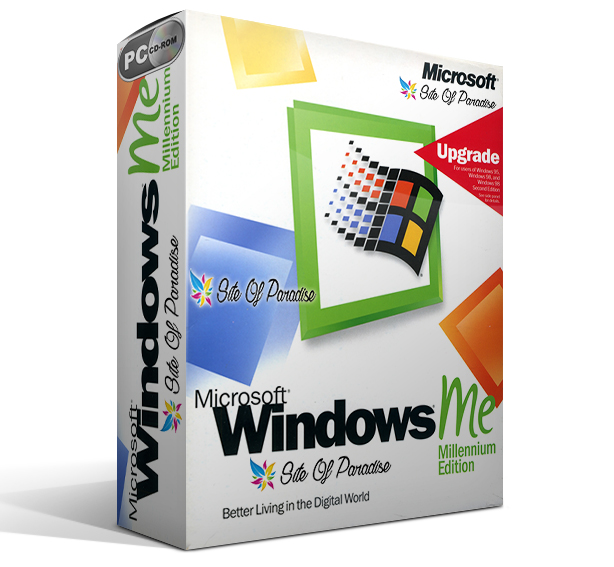The Evolution of Windows: A Journey Through Time

Windows, the iconic operating system developed by Microsoft, has undergone a remarkable transformation since its inception in 1985. Let's take a trip down memory lane and explore the major milestones in the evolution of Windows, from its humble beginnings to the modern era.
1. Windows 1.0 (1985):
Introduced on November 20, 1985, Windows 1.0 marked the debut of Microsoft's graphical user interface (GUI) for IBM-compatible PCs. It provided a multitasking environment and introduced the concept of windows, icons, menus, and a mouse-driven interface.
2. Windows 2.x (1987):
On December 9, 1987, Windows 2.x arrived, bringing improved graphics capabilities and enhanced performance. It introduced overlapping windows, resizable windows, and keyboard shortcuts, making the user experience more intuitive.
3. Windows 3.0 (1990):
May 22, 1990, witnessed the release of Windows 3.0, a significant milestone in the history of Windows. It introduced enhanced graphics, improved performance, and support for a wider range of applications. Windows 3.0 became a popular choice for both business and home users.
4. Windows for Workgroups 3.11 (1993):
On August 11, 1993, Windows for Workgroups 3.11 was released, emphasizing networking capabilities and file sharing among multiple computers. This version laid the foundation for future networking features in Windows.
5. Windows 95 (1995):
August 24, 1995, marked the launch of Windows 95, a revolutionary release that introduced the iconic Start button, Taskbar, and the concept of Plug and Play. Windows 95 brought significant improvements in user interface design and introduced long file names, making it more user-friendly.
6. Windows 98 (1998):
Windows 98, released on June 25, 1998, built upon the success of Windows 95. It introduced improvements in stability, hardware support, and included features like the Windows Driver Model and Internet Explorer 4.
7. Windows 2000 (2000):
On February 17, 2000, Windows 2000 was released, targeting the business market with improved security, stability, and scalability. It was the successor to Windows NT 4.0 and introduced features like Active Directory and Windows File Protection.
8. Windows XP (2001):
October 25, 2001, marked the arrival of Windows XP, one of the most popular and enduring versions of Windows. With its modernized interface, improved performance, and stability, Windows XP catered to both home and professional users. It also introduced the iconic Bliss desktop wallpaper.
9. Windows Vista (2007):
Windows Vista, released on January 30, 2007, aimed to enhance the security and user experience. It introduced a redesigned interface, Windows Aero, improved search functionality, and advancements in multimedia capabilities.
10. Windows 7 (2009):
On October 22, 2009, Windows 7 was launched, refining the features introduced in Windows Vista and improving overall performance. It focused on providing a more streamlined and user-friendly experience.
11. Windows 8 (2012) and Windows 8.1 (2013):
Windows 8, released on October 26, 2012, introduced a touch-centric interface and emphasized integration with online services. Windows 8.1, released on October 17, 2013, addressed some of the criticisms and added improvements to enhance the user experience.
12. Windows 10 (2015):
Windows 10, released on July 29, 2015, brought a unified platform across multiple devices, including PCs, tablets, and smartphones.
It introduced the concept of a continuously updated operating system, with regular feature updates and enhancements.
13. Windows 11 (2021):
The latest addition to the Windows family, Windows 11, was released in 2021. It features a redesigned interface, improved performance, and new productivity-focused features, providing users with a modern and immersive computing experience.
The evolution of Windows has witnessed remarkable advancements in user interface design, performance, security, and compatibility. Each release has addressed the changing needs of users and the ever-evolving technology landscape.
As we embrace the future, it's essential to appreciate the journey that Windows has taken, from its early iterations to the feature-rich operating system we know today. Windows has undoubtedly played a significant role in shaping the way we interact with computers and has become an integral part of our digital lives.
SPECIAL MENTION:
14. Windows Millennium Edition (Windows Me) (2000):
In September 2000, Microsoft released Windows Millennium Edition, also known as Windows Me. This version was aimed at home users and intended to be an upgrade from Windows 98. However, Windows Me faced numerous criticisms and ultimately failed to gain widespread acceptance.
Windows Me introduced some new features such as System Restore, Windows Movie Maker, and improved multimedia capabilities. However, it was plagued by several issues that hindered its performance and stability. Users reported frequent crashes, compatibility problems, and overall unreliability.
One of the major criticisms of Windows Me was its lack of compatibility with older software and hardware. Many devices and applications designed for Windows 95 and Windows 98 faced compatibility issues or simply didn't work correctly on Windows Me. This made it frustrating for users who relied on specific software or peripherals.
Furthermore, Windows Me didn't bring significant advancements in terms of security or performance compared to its predecessor. It was often seen as a more visually appealing version of Windows 98 rather than a substantial improvement.
The release of Windows Me was also marred by negative publicity and a lack of developer support. Microsoft shifted its focus to the development of Windows XP, which was released just a year later. As a result, Windows Me was considered by many as a stopgap solution rather than a substantial operating system upgrade.
Due to its numerous issues and limited improvements, Windows Me was largely seen as a failure in the Windows lineup. Microsoft discontinued support for Windows Me in 2006, further solidifying its status as a short-lived and unpopular operating system.
Windows Me serves as a reminder that even well-established software companies can release products that miss the mark. However, the failures and lessons learned from Windows Me undoubtedly contributed to the subsequent successes and improvements seen in later versions of Windows, such as Windows XP and beyond.
#WindowsEvolution #JourneyThroughTime #WindowsHistory #IconicOperatingSystem #WindowsMilestones #TechTransformations #UserInterfaceAdvancements #PerformanceImprovements #EnhancedSecurity #DigitalExperience #ModernComputing #Windows11 #TechRevolution #EmbracingInnovation #TechLegacy
Comments
Post a Comment